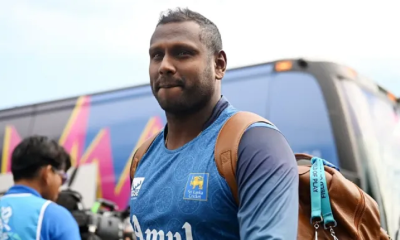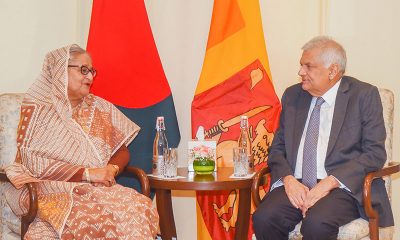Features
Back home working in Sri Lanka with WHO, ILO, World Bank and ICES

(Excerpted from Memories that linger: My journey through the world of disability by Padmani Mendis)
Although I had carried out assignments for all the WHO Regional Offices except the European Office quite early on in my journey, I had not really had the opportunity to work with WHO Colombo. That is until the year 2012 when the World Report on Disability was published jointly by WHO and the World Bank, a very significant event for disabled people worldwide. The Regional Office in New Delhi, for reasons best known to them, had selected Sri Lanka as a regional focal point for an official launch of the publication.
Dr. Lanka Dissanayake was handling the subject of disability in WHO Colombo and helped coordinate the event. Responsibility was shared by the Ministries of Social Services and that of Health. It was obvious to anyone that on this occasion the former held the floor. Disability was theirs and theirs alone. So clear they made it, that the Minister of Health left it to his deputy to attend the event. His position, it seemed, had been insulted. Such was the hierarchy.
Dr. Tom Shakespeare, one of the key figures behind the prestigious World Report, came from the UK to represent WHO and the World Bank. The launch was quite an affair. As is usual with the Ministry an exhibition of products made by disabled people was organised as well as a concert by them. A committee of six members from both ministries was set up to oversee arrangements. Dr. Dissanayake brought me into the committee. My task was to accompany Tom Shakespeare on a programme of visits she arranged for him. But she brought me in really because beyond the launch, she had another activity in mind.
And this is how she got the activity going. She took the opportunity of the launch of the publication to suggest to the two ministries that they launch at the same time the preparation of a National Plan of Action for Disability. This was later called the NAPD. The two ministries had naught to do but work with each other. To see the activity through she gave me an official position as a Consultant to work with the two ministries.
With the relevant officials, we brought together disabled people and others with expertise in various areas in particular groups to prepare the eight sections of the plan. These were based on the National Policy on Disability, NPD. My task, as well as providing advice, was the preparation of the written edited document based on the drafts submitted by the groups.
Much was achieved this way until it was time for an open forum. This was held with the participation of over 200 people. I have not to this day seen that many disabled people participate together with others at such an event in Sri Lanka.
The process did not end there. We followed through using the email to circulate the draft document as widely as possible. Feedback obtained was fed in until the draft was as complete as it could be. I estimated quite roughly that well over 600 people had participated in the preparation of that document.
Approved by the two ministries, it was submitted to cabinet by the Minister of Social Welfare. The formal document in the three languages has on its cover both ministries as co-producers. And a decade after our National Policy on Disability had been approved, we now had in 2014 a National Plan for its implementation.
How I wish that I could say that these documents were put into effect by government. No, that was never formally done. But one can still have some sense of satisfaction that much of the statements in the National Policy and strategies in the National Action Plan have even to some small extent been disseminated within and have pervaded our society. This is to be credited to concerned individuals and organisations, including academia dedicated to improving the situation of our disabled people over these many years.
It may also be that it was a result of these efforts as well as others that a consciousness grew in our society about the situation of our disabled people. And consequently, a consciousness also of their rights. And of what appeared to be associating disability with rights in the increasing public discourse and national dialogue. But no, not yet a major concern within government.
Following these few small steps, many hoped finally that Sri Lanka had taken a leap in 2016. This was when our country finally ratified the UN Convention on the Rights of Persons with Disabilities or CRPD, on February 8 of that year. Nope. No action to follow. False alarm again. Our government was likely responding to outside pressure that this had to be done. The enabling legislation for the CRPD is, just to remind you, still in the pipeline. The mechanism for its implementation has never been given a thought.
Nonetheless the two National Human Rights Action Plans (NHRAPs) that were made at around this time included disabled people as a subject area. I participated in the preparation of the NHRAP 2012 – 2016. It had been decided that disability was to be a cross-cutting issue in this plan and I was invited to serve on the relevant drafting committees.
By the time NHRAP 2017 – 2021 was being prepared, Sri Lanka had approved the CRPD so Disability had a whole section to itself. Here I was appointed to the drafting committee of the Disability section. Both remained as documents prepared using expensive paper with a glossy cover.
The whole fiasco led one to believe the NHRAPs were made only to impress the international community. Or to respond to their vociferous requests for Sri Lanka to fulfil our international commitments.
Journeying with the International Labour Organisation, Colombo
Journeying with the ILO in Colombo took me into a completely new ethos. Work, employment and the right to an income that was not connected with Community Based Rehabilitation (CBR). The right to work is the area in which perhaps the rights of disabled adults are most violated. Just as for children the greatest violation would undoubtedly be the right to education.
The most interesting of the tasks I did for ILO was in the Factory Improvement Programme implemented by the EFC or Employers Federation of Ceylon. It was therefore called the ILO – EFC Factory Improvement Programme.
This was an ILO regional programme aimed at improving the overall efficiency levels and competitiveness of selected factories. Including disabled people in these factories was part of the programme. A manual for training factory managers to fulfil programme aims was being developed by ILO.
My task was to field test the module in the manual which dealt with the inclusion of disabled people. I was first required to visit 10 factories in the western province selected for the field test and motivate employers to include disabled people in their workplace. Most were garment industries, while a few were related to the tea trade. It was a first experience for me going inside these factories and meeting staff. The factories were exceptionally well maintained as were their gardens, usually landscaped. All very pleasant.
I was most surprised by this finding. That is, nine of the 10 factories already had disabled employees. Speaking with them, I found that these employees were quite content with their situation. The managers, it appeared needed no motivating from me. This finding did not quite match the situation we found on the ground. The National Census of 2012 indicated that unemployment among disabled people was over 70%. Field workers believe it is even higher.
Beyond this was another welcome finding. While I was on the floor of a certain garment factory with the factory manager, the bell rang announcing the tea break. All the workers on the floor left as if in a hurry to make the most of the free time they were given. Except for one young man who waited to look around him; he went up to a colleague’s machine, did something with it and then left.
The manager explained to me what it was about. The young man, let’s call him Nanda, looked around him to see if all was in order. He found that a colleague had failed to switch his machine off, and this is what Nanda did before leaving the floor. The manager went on to tell me that Nanda had, the previous year, been recognised as the “Best Employee”. Nanda was deaf. He communicated with his colleagues using gestures and signs they made up. His impairment was no barrier at this workplace.
At yet another factory, the manager was proud to show me around so I could see how he had integrated in his factory more than a dozen disabled employees. He went on to say to me “If you bring me 20 disabled people tomorrow, I will give them all work.” And who talks of the low productivity levels of these our people?
The World Bank
Two of the more interesting tasks I did for The World Bank I would like to share with you. They were quite different from each other. The first took me in 2009 to many parts of my country again talking with many people from many different walks of life and a variety of institutions. This learning and experience went into a comprehensive report I gave to The World Bank calling it “Disability in Sri Lanka”.
The first appointment I carried out for this task was with the Director-General of Labour. Before I entered the beautiful new building housing the Ministry and Department of Labour, I had a toss, fell flat on my face and injured my foot. It was awfully painful and I could see my foot swelling up immediately. Appointments with these people were hard to get so I went ahead with it. It was later when I got to a hospital that I found out I had a fracture. My foot was put in a plaster cast. It could not take any weight for six weeks.
And so I started using a wheelchair. And this I used until I had completed the task travelling to all parts of the island for my work. Accessible hotels were very hard to find. Many buildings and offices were inaccessible. But people were kind. Even top Government officials came down to earth to meet me, some down from their Ivory Towers.
For the second task of preparing a document, I worked with the Ministry of Health, disabled people and a few others. This was approved and published by the ministry as their rehabilitation policy in 2014 and called “National Guidelines for Rehabilitation Services in Sri Lanka”. The process of preparing it involving discussions with a wide range of health personnel seemed to make them conscious to some degree of the needs of disabled people.
ICES and the Disability Policy Brief
The last formal work I carried out on my journey was with the International Centre for Ethnic Studies, ICES. The ICES was popular in our world because of the interest it showed in disability. Dr. Mario Gomes, the Executive Director, could very easily be approached by both disabled people and by us disability workers for particular support that we needed. So over the years, many meetings and workshops were sponsored and some research conducted related to disability.
Disability by this time had moved out of the public discourse. Action on it seemed to be low-key. Binendri Perera, an attorney attached to the University of Colombo and I discussed with Dr. Gomes the possibility of preparing for publication a brief document that may help to change this situation. The outcome of this is the ICES publication “Disability Policy Brief for Law Makers, Administrators and Other Decision Makers” in all three languages.
What Binendri and I did was synthesise in the document in point form the National Policy and National Action Plan both of which had Cabinet approval and the UN Convention on Disability which Sri Lanka had ratified.
To do this we analysed each recommendation and put them into one chart so that they could be related to each other and compared. This we trusted would lead to a comprehensive approach to implementation. We believed this simple format would encourage users to understand their respective roles in the overall process and take whatever action they could. ICES made sure it was distributed to reach all districts in Sri Lanka and divisions within many of those districts. One last attempt to move closer to a better life for our disabled people.
End of travel, but not of The Journey
I started my Journey in the World of Disability here at home in my Sri Lanka. I have shared with you the first small step of my journey that I took while yet at school with my decision to be a physiotherapist. And with that first step, the next to proceed to the UK to be an Orthopaedic Nurse as a means of studying to be a Physiotherapist.
It was right at the start of the five years and more of learning this process took that I made my contacts with disabled people of all ages. First as their nurse, to many their friend and confidante. Space permits me to share with you my experiences with only a few individuals of the many thousands that impacted my life as it was to unfold.
The first was but a small step, but one that led to all the steps I have taken since, taken during the next 65 years of my life to the age of 83 where I am now, back home where I started. Sharing my memories with you.
During the 64 years that I journeyed, unending opportunities made for me a journey that criss-crossed continents. When asked about it I have said that “I travel horizontally”. Because whilst I was in South America and the Caribbean during the early years, the rest of my journey I have spent in Asia, Africa and much of it in between, in the Middle-East. To me that is more important than the journeys I made North-South, although to participate in the many conferences, meetings and workshops in the industrialised north was also rewarding, as much as it was in the countries of the global south. And, of course, to share my learning through the innumerable teaching opportunities in many of the same countries.
Since about six years or so ago, physical impairment and difficulties have ended travel for me. But my journey is not ended. This continues in the Realm of Disability to this day. Modern communication technology makes it possible to meet North to South and East to West. Skype and Zoom and the good old telephone itself are a boon. My same dining table still serves as a conference table when I sit with the many visitors who come to talk with me about the situation of disabled people in Sri Lanka and elsewhere, past and present.
To share with you how my journey continues as of now here at home are just two examples. Last week I was interviewed by a Master’s student named Nathaniel from Columbia University in New York. About certain aspects of disability in Sri Lanka. But our discussion and my sharing also brought into it an international perspective. He was involved in a multi-country research study related to inclusive adolescent health care, the Report of which will be presented to a UN agency.
The second, a few months ago I was interviewed by Taryn from Mc Gill University in Montreal, Canada, also on zoom. She was carrying out a study related to women activists in Sri Lanka. I told her I did not consider myself to be an activist. But her definition being what it was she could not accept my reasons for that, and we had a really interesting discussion. Which came to be focused on my global journey in disability as it impacted my work in Sri Lanka.
And with that, it is time now to move on. To move on and reflect on my life as I lived it and on these the memories I shared with you.
Features
The Great and Little Traditions and Sri Lankan Historiography
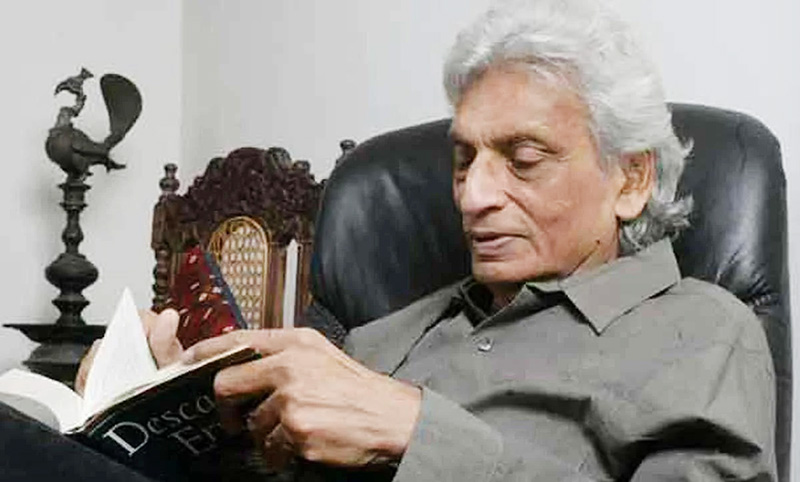
Power, Culture, and Historical Memory:
History, broadly defined, is the study of the past. It is a crucial component of the production and reproduction of culture. Studying every past event is neither feasible nor useful. Therefore, it is necessary to be selective about what to study from the countless events in the past. Deciding what to study, what to ignore, how to study, and how deeply to go into the past is a conscious choices shaped by various forms of power and authority. If studying the past is a main element of the production and reproduction of culture and History is its product, can a socially and culturally divided society truly have a common/shared History? To what extent does ‘established’ or ‘authentic’ History reflect the experiences of those remained outside the political, economic, social, and cultural power structures? Do marginalized groups have their own histories, distinct from dominant narratives? If so, how do these histories relate to ‘established’ History? Historiography today cannot ignore these questions, as they challenge the very notion of truth in History. Due to methodological shifts driven by post-positivist critiques of previously accepted assumptions, the discipline of history—particularly historiography—has moved into a new epistemological terrain.
The post-structuralism and related philosophical discourses have necessitated a critical reexamination of the established epistemological core of various social science disciplines, including history. This intellectual shift has led to a blurring of traditional disciplinary boundaries among the social sciences and the humanities. Consequently, concepts, theories, and heuristic frames developed in one discipline are increasingly being incorporated into others, fostering a process of cross-fertilization that enriches and transforms scholarly inquiry
In recent decades, the discipline of History has broadened its scope and methodologies through interactions with perspectives from the Social Sciences and Humanities. Among the many analytical tools adopted from other disciplines, the Great Tradition and Little Tradition have had a significant impact on historical methodology. This article examines how these concepts, originally developed in social anthropology, have been integrated into Sri Lankan historiography and assesses their role in deepening our understanding of the past.
The heuristic construct of the Great and Little Traditions first emerged in the context of US Social Anthropology as a tool/framework for identifying and classifying cultures. In his seminal work Peasant society and culture: an anthropological approach to civilization, (1956), Robert Redfield introduced the idea of Great and Little Traditions to explain the dual structure of cultural expression in societies, particularly in peasant communities that exist within larger civilizations. His main arguments can be summarized as follows:
a) An agrarian society cannot exist as a fully autonomous entity; rather, it is just one dimension of the broader culture in which it is embedded. Therefore, studying an agrarian society in isolation from its surrounding cultural context is neither possible nor meaningful.
b) Agrarian society, when views in isolation, is a ‘half society’, representing a partial aspect/ one dimension of the broader civilization in which it exits. In that sense, agrarian civilization is a half civilization. To fully understand agrarian society—and by extension, agrarian civilization—it is essential to examine the other half that contribute to the whole.
c) Agrarian society was shaped by the interplay of two cultural traditions within a single framework: the Great Tradition and the Little Tradition. These traditions together provided the unity that defined the civilization embedded in agrarian society.
d) The social dimensions of these cultural traditions would be the Great Society and the Little Society.
e) The Great Culture encompasses the cultural framework of the Great Society, shaped by those who establish its norms. This group includes the educated elite, clergy, theologians, and literati, whose discourse is often regarded as erudite and whose language is considered classical.
f) The social groups excluded from the “Great Society”—referred to as the “Little Society”—have their own distinct traditions and culture. The “Great Tradition” represents those who appropriate society’s surplus production, and its cultural expressions reflect this dominance. In contrast, the “Little Tradition” belongs to those who generate surplus production. While the “Great Tradition” is inherently tied to power and authority, the “Little Tradition” is not directly connected to them.
g) According to Robert Redfield, the Great and Little Traditions are not contradictory but rather distinct cultural elements within a society. The cultural totality of peasant society encompasses both traditions. As Redfield describes, they are “two currents of thought and action, distinguishable, yet overflowing into and out of each other.” (Redfield, 1956).
At the time Redfield published his book Peasant Society and Culture: an Anthropological Approach to Civilization (1956), the dominant analytical framework for studying non-Western societies was modernization theory. This perspective, which gained prominence in the post-World War II era, was deeply influenced by the US geopolitical concerns. Modernization theory became a guiding paradigm shaping research agendas in anthropology, sociology, political science, and development studies in US institutions of higher learning,
Modernization theory viewed societies as existing along a continuum between “traditional” and “modern” stages, with Western industrialized nations positioned near the modern end. Scholars working within this framework argued that economic growth, technological advancement, urbanization, and the rationalization of social structures drive traditional societies toward modernization. The theory often emphasized Western-style education, democratic institutions, and capitalist economies as essential components of this transition.
While engaging with aspects of modernization theory, Redfield offered a more nuanced perspective on non-Western societies. His concept of the “folk-urban continuum” challenged rigid dichotomies between tradition and modernity, proposing that social change occurs through complex interactions between rural and urban ways of life rather than through the simple replacement of one by the other.
The concepts of the Great and Little Traditions gained prominence in Sri Lankan social science discourse through the works of Gananath Obeyesekere, the renowned sociologist who recently passed away. In his seminal research essay, The Great Tradition and the Little in the Perspective of Sinhalese Buddhism (Journal of Asian Studies, 22, 1963), Gananath Obeyesekere applied and adapted this framework to examine key aspects of Sinhalese Buddhism in Sri Lanka. While Robert Redfield originally developed the concept in the context of agrarian societies, Obeyesekere employed it specifically to analyze Sinhala Buddhist culture, highlighting significant distinctions between the two approaches.
He identifies a phenomenon called ‘Sinhala Buddhism’, which represents a unique fusion of religious and cultural traditions: the Great Tradition (Maha Sampradaya) and the Little Traditions (Chuula Sampradaya). To fully grasp the essence of Sinhala Buddhism, it is essential to understand both of these dimensions and their interplay within society.
The Great Tradition represents the formal, institutionalized aspect of Buddhism, centered on the Three Pitakas and other classical doctrinal texts and commentaries of Theravāda Buddhism. It embodies the orthodoxy of Sinhala Buddhism, emphasizing textual authority, philosophical depth, and ethical conduct. Alongside this exists another dimension of Sinhala Buddhism known as the Little (Chuula) Tradition. This tradition reflects the popular, localized, and ritualistic expressions of Buddhism practiced by laypeople. It encompasses folk beliefs, devotional practices (Bali, Thovil), deity veneration, astrology, and rituals (Hadi and Huunium) aimed at securing worldly benefits. Unlike the doctrinally rigid Great Tradition, the Little Tradition is fluid, adaptive, and shaped by indigenous customs, ancestral practices, and even elements of Hinduism. These Sinhala Buddhist cultural practices are identified as ‘Lay-Buddhism’. Gananath Obeyesekera’s concepts and perspectives on Buddhist culture and society contributed to fostering an active intellectual discourse in society. However, the discussion on the concept of Great and Little Traditions remained largely within the domain of social anthropology.
The scholarly discourse on the concepts of Great and Little Tradition gained new socio-political depth through the work of Newton Gunasinghe, a distinguished Sri Lankan sociologist. He applied these concepts to the study of culture and socio-economic structures in the Kandyan countryside, reframing them in terms of production relations. Through his extensive writings and public lectures, Gunasinghe reinterpreted the Great and Little Tradition framework to explore the interconnections between economy, society, and culture.
Blending conventional social anthropology approach with Marxist analyses of production relations and Gramscian perspectives on culture and politics, he offered a nuanced understanding of these dynamics. In the context of our discussion, his key insights on culture, society, and modes of production can be summarized as follows.
a. The social and economic relations of the central highlands under the Kandyan Kingdom, the immediate pre-colonial social and economic order, were his focus. His analysis did not cover to the hydraulic Civilization of Sri Lanka.
b. He explored the organic and dialectical relationship between culture, forces of production, and modes of production. Drawing on the concepts of Antonio Gramsci and Louis Althusser, he examined how culture, politics, and the economy interact, identifying the relationship between cultural formations and production relations
c. Newton Gunasinghe’s unique approach to the concepts of Great Culture and Little Culture lies in his connection of cultural formations to forces and relations of production. He argues that the relationship between a society’s structures and its superstructures is both dialectical and interpenetrative.
d. He observed that during the Kandyan period, the culture associated with the Little Tradition prevailed, rather than the culture linked to the Great Tradition.
e. The limitations of productive forces led to minimal surplus generation, with a significant portion allocated to defense. The constrained resources sustained only the Little Tradition. Consequently, the predominant cultural mode in the Kandyan Kingdom was, broadly speaking, the Little Tradition.
(To be continued)
by Gamini Keerawella
Features
Celebrating 25 Years of Excellence: The Silver Jubilee of SLIIT – II
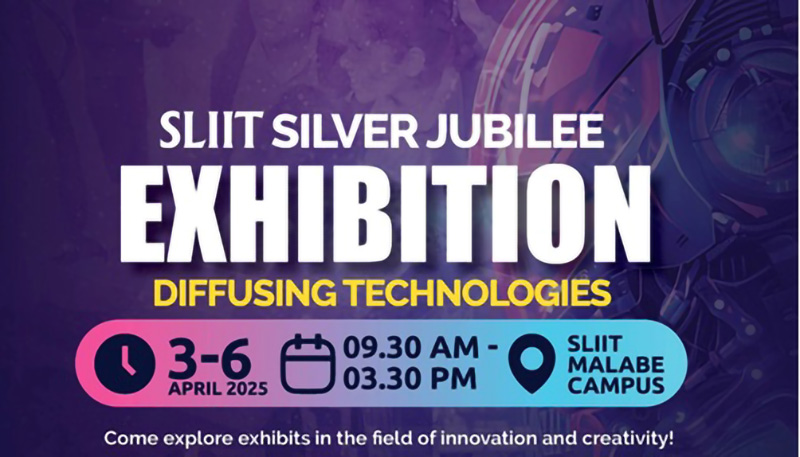
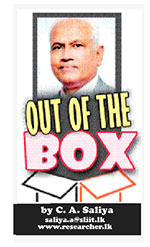 Founded in 1999, with its main campus in Malabe and multiple centres across the country—including Metro Campus (Colombo), Matara, Kurunegala, Kandy (Pallekele), and Jaffna (Northern Uni)—SLIIT provides state-of-the-art facilities for students, now celebrating 25 years of excellence in 2025.
Founded in 1999, with its main campus in Malabe and multiple centres across the country—including Metro Campus (Colombo), Matara, Kurunegala, Kandy (Pallekele), and Jaffna (Northern Uni)—SLIIT provides state-of-the-art facilities for students, now celebrating 25 years of excellence in 2025.
Kandy Campus
SLIIT is a degree-awarding higher education institute authorised and approved by the University Grants Commission (UGC) and Ministry of Higher Education under the University Act of the Government of Sri Lanka. SLIIT is also the first Sri Lankan institute accredited by the Institution of Engineering & Technology, UK. Further, SLIIT is also a member of the Association of Commonwealth Universities (ACU) and the International Association of Universities (IAU).
Founded in 1999, with its main campus in Malabe and multiple centres across the country—including Metro Campus (Colombo), Matara, Kurunegala, Kandy (Pallekele), and Jaffna (Northern Uni)—SLIIT provides state-of-the-art facilities for students, now celebrating 25 years of excellence in 2025.
Since its inception, SLIIT has played a pivotal role in shaping the technological and educational landscape of Sri Lanka, producing graduates who have excelled in both local and global arenas. This milestone is a testament to the institution’s unwavering commitment to academic excellence, research, and industry collaboration.
Summary of SLIIT’s
History and Status
Sri Lanka Institute of Information Technology (SLIIT) operates as a company limited by guarantee, meaning it has no shareholders and reinvests all surpluses into academic and institutional development.
* Independence from Government: SLIIT was established in 1999 as an independent entity without government ownership or funding, apart from an initial industry promotion grant from the Board of Investment (BOI).
* Mahapola Trust Fund Involvement & Malabe Campus: In 2000, the Mahapola Trust Fund (MTF) agreed to support SLIIT with funding and land for the Malabe Campus. In 2015, SLIIT fully repaid MTF with interest, ending financial ties.
* True Independence (2017-Present): In 2017, SLIIT was officially delisted from any government ministry, reaffirming its status as a self-sustaining, non-state higher education institution.
Today, SLIIT is recognised for academic excellence, global collaborations, and its role in producing IT professionals in Sri Lanka
.A Journey of Growth and Innovation
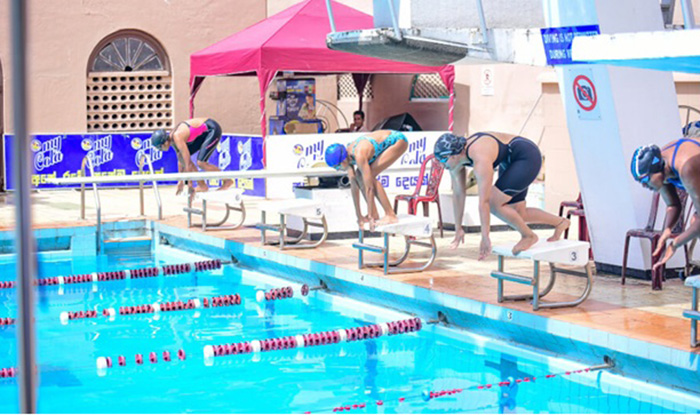
SLIIT began as a pioneering institution dedicated to advancing information technology education in Sri Lanka. Over the past two and a half decades, it has expanded its academic offerings, establishing itself as a multidisciplinary university with programmess in engineering, business, architecture, and humanities, in addition to IT. The growth of SLIIT has been marked by continuous improvement in infrastructure, faculty development, and curriculum enhancement, ensuring that students receive world-class education aligned with industry needs.
Looking Ahead: The Next 25 Years
As SLIIT celebrates its Silver Jubilee, the institution looks forward to the future with a renewed commitment to excellence. With advancements in technology, the rise of artificial intelligence, and the increasing demand for skilled professionals, SLIIT aims to further expand its academic offerings, enhance research capabilities, and continue fostering a culture of innovation. The next 25 years promise to be even more transformative, as the university aspires to make greater contributions to national and global progress.
Sports Achievements:
A Legacy of Excellence
SLIIT has not only excelled in academics but has also built a strong reputation in sports. Over the years, the university has actively promoted athletics and competitive sports by organising inter-university and inter-school competitions, fostering a culture of teamwork, discipline, and resilience. SLIIT teams have secured victories in national and inter-university competitions across various sports, including cricket, basketball, badminton, rugby, football, swimming, and athletics. SLIIT’s sports achievements reflect its dedication to holistic student development, encouraging students to excel beyond the classroom.
Kings of the pool!
Once again, our swimmers have brought glory to SLIIT by emerging as champions at the Asia Pacific Institute of Information and Technology Extravaganza Swimming Championship 2024. They won the Men’s, Women’s, and Overall Championships. Congratulations to all swimmers for their dedication and hard work in the pool, bringing honour to SLIIT.
Winning International Competitions
SLIIT students have participated in and excelled in various international competitions, including Robofest, Codefest, and the University of Queensland – Design Solution for Impact Competition, showcasing their skills and talent on a global stage.
Here’s a more detailed look at SLIIT’s involvement in international competitions:
Robofest:
SLIIT’s Faculty of Engineering organises the annual Robofest competition, which aims to empower students with skills in electronics, robotics, critical thinking, and problem-solving, preparing them to compete internationally and bring recognition to Sri Lankan talent.
Codefest:
CODEFEST is a nationwide Software Competition organized by the Faculty of Computing of Sri Lanka Institute of Information Technology (SLIIT) geared towards exhibiting the software application design and developing talents of students island-wide. It is an effort of SLIIT to elevate the entire nation’s ICT knowledge to achieve its aspiration of being the knowledge hub in Asia. CODEFEST was first organised in 2012 and this year it will be held for the 8th consecutive time in parallel with the 20th anniversary celebrations of SLIIT.
University of Queensland – Design Solution for Impact Competition:
SLIIT hosted the first-ever University of Queensland – Design Solution for Impact Competition in Sri Lanka, with 16 school teams from across the country participating.
International Open Day:
SLIIT organises an International Open Day where students can connect with distinguished lecturers and university representatives from prestigious institutions like the University of Queensland, Liverpool John Moores University, and Manchester Metropolitan University.
Brain Busters:
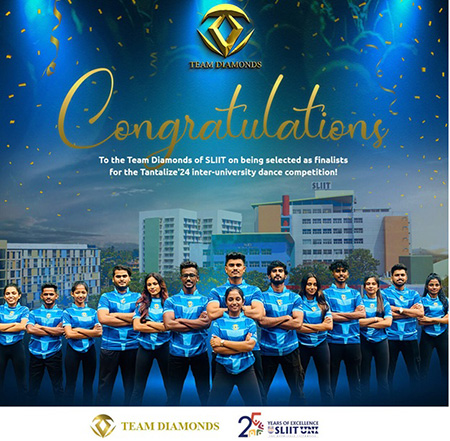
SLIIT Brain Busters is a quiz competition organised by SLIIT. The competition is open to students of National, Private and International Schools Island wide. The programme is broadcast on TV1 television as a series.
Inter-University Dance Competition:
SLIIT Team Diamonds for being selected as finalists and advancing to the Grand Finale of Tantalize 2024, the inter-university dance competition organised by APIIT Sri Lanka. The 14 talented team members from various SLIIT faculties have showcased their skills in Team Diamonds and earned their spot as finalists, competing among over 30 teams from state universities, private universities, and higher education institutes.
Softskills+
For the 11th consecutive year, Softskills+ returns with an exciting lineup of events aimed at honing essential soft skills among students. The program encompasses an interschool quiz contest and a comprehensive workshop focused on developing teamwork, problem-solving abilities, leadership qualities, and fostering creative thinking.
Recently, the Faculty of Business at SLIIT organised its annual Inter-school Quiz Competition and Soft Skills Workshop, marking its fifth successive year. Targeting students in grades 11 to 13 from Commerce streams across State, Private, and International schools, the workshop sought to ignite a passion for soft skills development, emphasising teamwork, problem-solving, creativity, and innovative thinking. Recognising the increasing importance of these soft skills in today’s workforce, the programme aims to fill the gap often left unaddressed in the school curriculum.”
The winners of the soft skill competition with Professor Lakshman Rathnayake: Chairman/Chancellor, Vice Chancellor/MD Professor Lalith Gamage, Professor Nimal Rajapakse: Senior Deputy Vice – Chancellor & Provost, Deputy Vice Chancellor – Research and International Affairs Professor Samantha Thelijjagoda, and Veteran Film Director Somarathna Dissanayake.
VogueFest 2024:
SLIIT Business School organised VogueFest 2024, a platform for emerging fashion designers under 30 to showcase their work and win prizes.
T-shirt Design Competition with Sheffield Hallam University:
SLIIT and Sheffield Hallam University (SHU) UK collaborated on a T-shirt designing competition, with a voting procedure to select the best design.
SLIIT’s Got Talent
: The annual talent show, SLIIT’s Got Talent 2024, was held for the 10th consecutive year at the Nelum Pokuna Mahinda Rajapaksa Theatre on 27th September 2024. SLIIT’s Got Talent had the audience energised with amazing performances, showcasing mind-blowing talent by the orchestra and the talented undergraduates from all faculties.
Other events:
* SLIIT also participates in events like the EDUVision Exhibition organised by the Richmond College Old Boys’ Association.
* They hosted the first-ever University of Queensland – Design Solution for Impact Competition in Sri Lanka.
* SLIIT Business School also organised the Business Proposal Competition.
SLIIT Academy:
SLIIT Academy (Pvt.) Ltd. provides industrial-oriented learning experiences for students.
International Partnerships:
SLIIT has strong international partnerships with universities like Liverpool John Moores University (LJMU), The University of Queensland (UQ), Manchester Metropolitan University (MMU), and Curtin University Australia, providing opportunities for students to study and participate in international events.
(The writer, a senior Chartered Accountant and professional banker, is Professor at SLIIT University, Malabe. He is also the author of the “Doing Social Research and Publishing Results”, a Springer publication (Singapore), and “Samaja Gaveshakaya (in Sinhala).
Features
Inescapable need to deal with the past
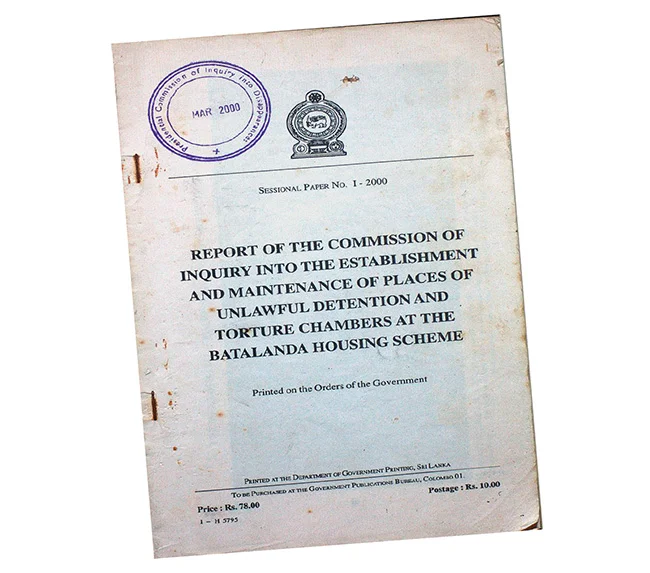
The sudden reemergence of two major incidents from the past, that had become peripheral to the concerns of people today, has jolted the national polity and come to its centre stage. These are the interview by former president Ranil Wickremesinghe with the Al Jazeera television station that elicited the Batalanda issue and now the sanctioning of three former military commanders of the Sri Lankan armed forces and an LTTE commander, who switched sides and joined the government. The key lesson that these two incidents give is that allegations of mass crimes, whether they arise nationally or internationally, have to be dealt with at some time or the other. If they are not, they continue to fester beneath the surface until they rise again in a most unexpected way and when they may be more difficult to deal with.
In the case of the Batalanda interrogation site, the sudden reemergence of issues that seemed buried in the past has given rise to conjecture. The Batalanda issue, which goes back 37 years, was never totally off the radar. But after the last of the commission reports of the JVP period had been published over two decades ago, this matter was no longer at the forefront of public consciousness. Most of those in the younger generations who were too young to know what happened at that time, or born afterwards, would scarcely have any idea of what happened at Batalanda. But once the issue of human rights violations surfaced on Al Jazeera television they have come to occupy centre stage. From the day the former president gave his fateful interview there are commentaries on it both in the mainstream media and on social media.
There seems to be a sustained effort to keep the issue alive. The issues of Batalanda provide good fodder to politicians who are campaigning for election at the forthcoming Local Government elections on May 6. It is notable that the publicity on what transpired at Batalanda provides a way in which the outcome of the forthcoming local government elections in the worst affected parts of the country may be swayed. The problem is that the main contesting political parties are liable to be accused of participation in the JVP insurrection or its suppression or both. This may account for the widening of the scope of the allegations to include other sites such as Matale.
POLITICAL IMPERATIVES
The emergence at this time of the human rights violations and war crimes that took place during the LTTE war have their own political reasons, though these are external. The pursuit of truth and accountability must be universal and free from political motivations. Justice cannot be applied selectively. While human rights violations and war crimes call for universal standards that are applicable to all including those being committed at this time in Gaza and Ukraine, political imperatives influence what is surfaced. The sanctioning of the four military commanders by the UK government has been justified by the UK government minister concerned as being the fulfilment of an election pledge that he had made to his constituents. It is notable that the countries at the forefront of justice for Sri Lanka have large Tamil Diasporas that act as vote banks. It usually takes long time to prosecute human rights violations internationally whether it be in South America or East Timor and diasporas have the staying power and resources to keep going on.
In its response to the sanctions placed on the military commanders, the government’s position is that such unilateral decisions by foreign government are not helpful and complicate the task of national reconciliation. It has faced criticism for its restrained response, with some expecting a more forceful rebuttal against the international community. However, the NPP government is not the first to have had to face such problems. The sanctioning of military commanders and even of former presidents has taken place during the periods of previous governments. One of the former commanders who has been sanctioned by the UK government at this time was also sanctioned by the US government in 2020. This was followed by the Canadian government which sanctioned two former presidents in 2023. Neither of the two governments in power at that time took visibly stronger stands.
In addition, resolutions on Sri Lanka have been a regular occurrence and have been passed over the Sri Lankan government’s opposition since 2012. Apart from the very first vote that took place in 2009 when the government promised to take necessary action to deal with the human rights violations of the past, and won that vote, the government has lost every succeeding vote with the margins of defeat becoming bigger and bigger. This process has now culminated in an evidence gathering unit being set up in Geneva to collect evidence of human rights violations in Sri Lanka that is on offer to international governments to use. This is not a safe situation for Sri Lankan leaders to be in as they can be taken before international courts in foreign countries. It is important for Sri Lanka’s sovereignty and dignity as a country that this trend comes to an end.
COMPREHENSIVE SOLUTION
A peaceful future for Sri Lanka requires a multi-dimensional approach that addresses the root causes of conflict while fostering reconciliation, justice, and inclusive development. So far the government’s response to the international pressures is to indicate that it will strengthen the internal mechanisms already in place like the Office on Missing Persons and in addition to set up a truth and reconciliation commission. The difficulty that the government will face is to obtain a national consensus behind this truth and reconciliation commission. Tamil parties and victims’ groups in particular have voiced scepticism about the value of this mechanism. They have seen commissions come and commissions go. Sinhalese nationalist parties are also highly critical of the need for such commissions. As the Nawaz Commission appointed to identify the recommendations of previous commissions observed, “Our island nation has had a surfeit of commissions. Many witnesses who testified before this commission narrated their disappointment of going before previous commissions and achieving nothing in return.”
Former minister Prof G L Peiris has written a detailed critique of the proposed truth and reconciliation law that the previous government prepared but did not present to parliament.
In his critique, Prof Peiris had drawn from the South African truth and reconciliation commission which is the best known and most thoroughly implemented one in the world. He points out that the South African commission had a mandate to cover the entire country and not only some parts of it like the Sri Lankan law proposes. The need for a Sri Lankan truth and reconciliation commission to cover the entire country and not only the north and east is clear in the reemergence of the Batalanda issue. Serious human rights violations have occurred in all parts of the country, and to those from all ethnic and religious communities, and not only in the north and east.
Dealing with the past can only be successful in the context of a “system change” in which there is mutual agreement about the future. The longer this is delayed, the more scepticism will grow among victims and the broader public about the government’s commitment to a solution. The important feature of the South African commission was that it was part of a larger political process aimed to build national consensus through a long and strenuous process of consultations. The ultimate goal of the South African reconciliation process was a comprehensive political settlement that included power-sharing between racial groups and accountability measures that facilitated healing for all sides. If Sri Lanka is to achieve genuine reconciliation, it is necessary to learn from these experiences and take decisive steps to address past injustices in a manner that fosters lasting national unity. A peaceful Sri Lanka is possible if the government, opposition and people commit to truth, justice and inclusivity.
by Jehan Perera
-

 Sports3 days ago
Sports3 days agoSri Lanka’s eternal search for the elusive all-rounder
-
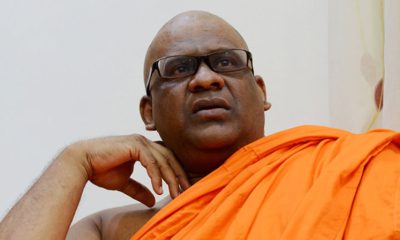
 News4 days ago
News4 days agoGnanasara Thera urged to reveal masterminds behind Easter Sunday terror attacks
-
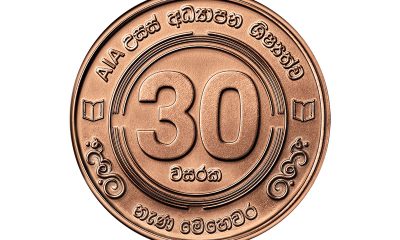
 Business5 days ago
Business5 days agoAIA Higher Education Scholarships Programme celebrating 30-year journey
-
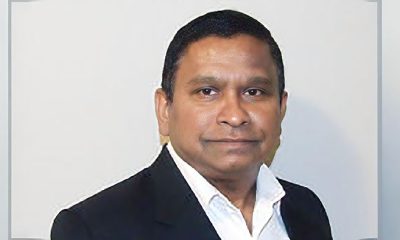
 News2 days ago
News2 days agoBid to include genocide allegation against Sri Lanka in Canada’s school curriculum thwarted
-
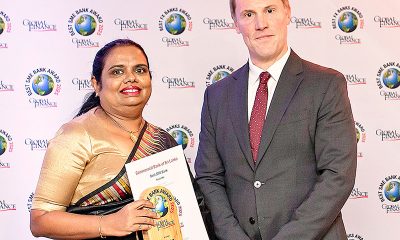
 News3 days ago
News3 days agoComBank crowned Global Finance Best SME Bank in Sri Lanka for 3rd successive year
-
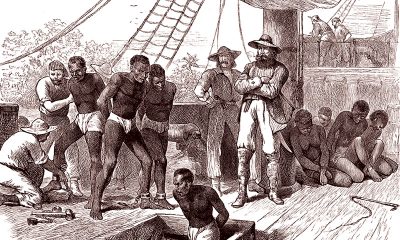
 Features3 days ago
Features3 days agoSanctions by The Unpunished
-

 Latest News1 day ago
Latest News1 day agoIPL 2025: Rookies Ashwani and Rickelton lead Mumbai Indians to first win
-
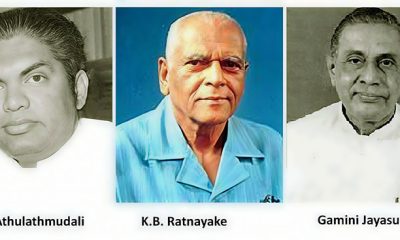
 Features3 days ago
Features3 days agoMore parliamentary giants I was privileged to know




